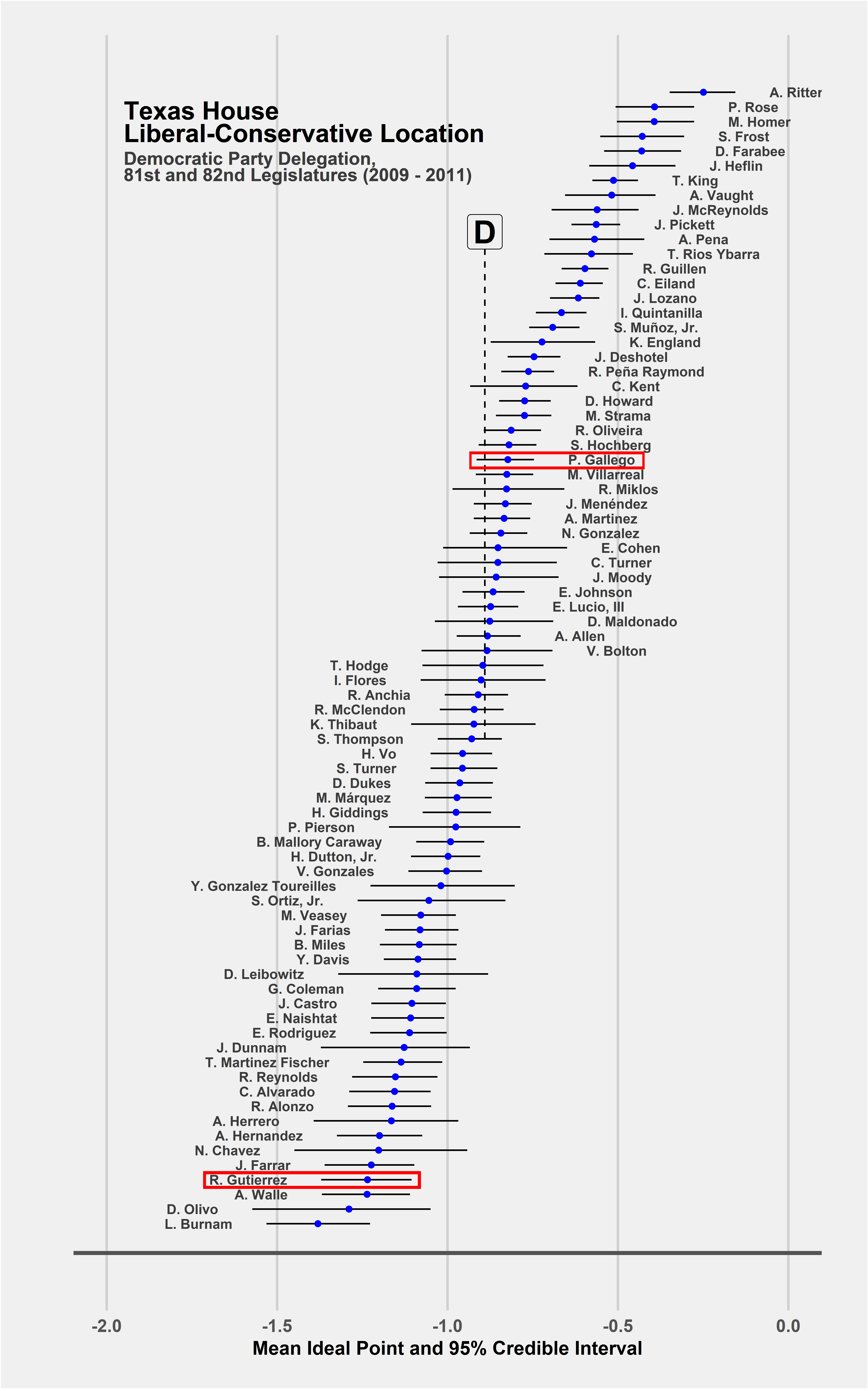Two distinct Democratic options in the SD-19 special election

Big Bend National Park, in the heart of the 19th Senate District Photo by Bob Daemmrich
Eight candidates filed to run in this month’s special election to replace state Sen. Carlos Uresti, D-San Antonio, but only two among the four Democrats, three Republicans and one Libertarian have a realistic prospect of succeeding Uresti in SD-19: former state and U.S. representative Pete Gallego, D-Alpine, and state Rep. Roland Gutierrez, D-San Antonio. As was the case three-and-a-half years ago in the neighboring SD-26 special election, this contest provides voters with two distinct ideological options within the Texas Democratic Party: Gutierrez from the party's left wing, and Gallego from its center wing.
That 2015 SD-26 special election featured then-state Reps. Trey Martinez Fischer and José Menéndez, both Democrats from San Antonio. The more liberal Martinez Fisher finished ahead of the centrist Menéndez in the first round, but in the runoff, Menéndez leapfrogged his rival with 59 percent of the vote.
Gallego and Gutierrez overlapped for two legislative cycles in the Texas House of Representatives (2009-12) before Gallego went on to a single term in the U.S. House. Since they served together, we can use the 1,456 non-lopsided roll-call votes held over the course of the 81st and 82nd Legislatures to compare where Gallego and Gutierrez fall on the liberal-conservative dimension along which most voting takes place in the Texas House.

The graph provides the location on the Liberal-Conservative Dimension of each of the 78 Democrats who served in the Texas House at some point during these two legislative terms and was present for a sufficient number of votes to allow for an accurate analysis of their ideological location. In addition to each representative's Lib-Con Score (represented by a blue circle), the 95 percent credible interval (CI) for this point estimate is provided. If two representatives' CIs overlap, their locations on the ideological spectrum might be statistically equivalent, even if their Lib-Con Scores are different. Finally, a vertical dashed line indicates the median Lib-Con Score for House Democrats during this time frame, with legislators to the right of it more conservative than the median Democrat, and to the left more liberal.
The Democrats' scores ranged from Lon Burnam of Fort Worth on the liberal end of the spectrum to Allan Ritter of Nederland on the centrist end of the spectrum. For legislators like Ritter, who switched parties within this time frame, only their votes as Democrats are used in these calculations.
Among these 78 Democrats, Gutierrez was the fourth most liberal. No Democrats were significantly more liberal than Gutierrez, while 50 were significantly more conservative. In contrast, Gallego was located within the Democratic Party’s center, with 21 Democratic representatives significantly more liberal than him and 16 significantly more conservative. Gutierrez and Gallego’s 95 percent CIs do not overlap, indicating that during the two sessions where they served together, Gutierrez was significantly more liberal than Gallego. Martinez Fischer and Menéndez, of the 2015 SD-26 special election, also served during the 81st and 82nd Legislatures, with Gutierrez possessing a Lib-Con Score slightly (though not significantly) more liberal than that of Martinez Fischer and Gallego a Lib-Con Score slightly (though not significantly) less liberal than that of Menéndez.
After Gallego ascended to the U.S. House in 2013, Gutierrez remained in the Texas House. In 2013 Gutierrez continued in the most liberal quintile of Democrats and in 2015 in the second most liberal quintile, before shifting further to the right in 2017 when he was located within the second most conservative quintile. In his one term (2013-14) in the U.S. House, Gallego had the second most centrist voting record of any Texas Democrat, with a Lib-Con Score significantly less liberal than 8 of his 11 fellow Texas Democrats. Gallego was also the 12th most conservative member of the 202-member Democratic U.S. House delegation. These subsequent voting records are not as easily compared, but nevertheless suggest Gutierrez and Gallego maintained notably distinct positions along the ideological spectrum.
The 19th Senate District covers all or part of 17 counties, with three-fifths of its voters concentrated in Bexar County and the remainder spread across 16 largely rural and semi-rural counties south and west of the Alamo City. The winner of the special election will be in a privileged position from which to seek re-election in 2020. The most likely scenario for July 31 is that Gutierrez and Gallego finish in the top two, but neither surpasses the 50 percent barrier needed to avoid a runoff. In the second round face-off between these two former colleagues, it would not be surprising to see Gallego take a page from the Menéndez playbook and, in addition to relying on his natural base of support among Democrats and independents in the district's 16 rural and semi-rural counties, make an appeal to independents and Republicans in order to defeat Gutierrez and head to Austin as SD-19's next senator.
Rice University has been a financial supporter of The Texas Tribune, a nonprofit, nonpartisan news organization that is funded in part by donations from members, foundations and corporate sponsors. Financial supporters play no role in the Tribune's journalism. Find a complete list of them here.

